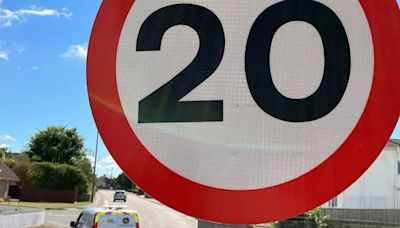Search results
- Overview
- Land
- Relief
- Drainage
- Soils
Wales is a constituent unit of the United Kingdom that forms a westward extension of the island of Great Britain.
What kind of climate does Wales have?
Wales has a maritime climate with frequent precipitation; annual totals average 55 inches (1,385 mm). Winter snowfall can be significant in the uplands. The mean daily temperature is 50 °F (10 °C), ranging from 40 °F (4 °C) in January to 61 °F (16 °C) in July and August.
What languages are spoken in Wales?
Welsh and English are the primary languages spoken in Wales.
What is the name of Wales in Welsh?
Wales is bounded by the Dee estuary and Liverpool Bay to the north, the Irish Sea to the west, the Severn estuary and the Bristol Channel to the south, and England to the east. Anglesey (Môn), the largest island in England and Wales, lies off the northwestern coast and is linked to the mainland by road and rail bridges. The varied coastline of Wale...
Glaciers during the Pleistocene Epoch (about 2,600,000 to 11,700 years ago) carved much of the Welsh landscape into deeply dissected mountains, plateaus, and hills, including the north-south–trending Cambrian Mountains, a region of plateaus and hills that are themselves fragmented by rivers. Protruding from that backbone are two main mountain areas—the Brecon Beacons in the south, rising to 2,906 feet (886 metres) at Pen y Fan, and Snowdonia in the northwest, reaching 3,560 feet (1,085 metres) at Snowdon, the highest mountain in Wales. Snowdonia’s magnificent scenery is accentuated by stark and rugged rock formations, many of volcanic origin, whereas the Beacons generally have softer outlines. The uplands are girdled on the seaward side by a series of steep-sided coastal plateaus ranging in elevation from about 100 to 700 feet (30 to 210 metres). Many of them have been pounded by the sea into spectacular steplike cliffs. Other plateaus give way to coastal flats that are estuarine in origin.
Are you a student? Get Britannica Premium for only 24.95 - a 67% discount!
Learn More
Wales consists of six traditional regions—the rugged central heartland, the North Wales lowlands and Isle of Anglesey county, the Cardigan coast (Ceredigion county), the southwestern lowlands, industrial South Wales, and the Welsh borderland. The heartland, which coincides partly with the counties Powys, Denbighshire, and Gwynedd, extends from the Brecon Beacons in the south to Snowdonia in the north and includes the two national parks based on those mountain areas. To the north and northwest lie the coastal lowlands, together with the Lleyn Peninsula (Penrhyn Llŷn) in Gwynedd and the island of Anglesey. To the west of the heartland, and coinciding with the county of Ceredigion, lies the coastline of Cardigan Bay, with numerous cliffs and coves and pebble- and sand-filled beaches. Southwest of the heartland are the counties of Pembrokeshire and Carmarthenshire. There the land rises eastward from St. David’s Head, through moorlands and uplands, to 1,760 feet (536 metres) in the Preseli Hills. South Wales stretches south of the heartland on an immense but largely exhausted coalfield. To the east of the heartland, the Welsh border region with England is largely agricultural and is characterized by rolling countryside and occasional wooded hills and mountainous moorland.
The main watershed of Wales runs approximately north-south along the central highlands. The larger river valleys all originate there and broaden westward near the sea or eastward as they merge into lowland plains along the English border. The Severn and Wye, two of Britain’s longest rivers, lie partly within central and eastern Wales and drain into...
The parent rock of Wales is dominated by strata ranging from Precambrian time (more than 540 million years ago) to representatives of the Jurassic Period (about 200 million to 145 million years ago). However, glaciers during the Pleistocene blanketed most of the landscape with till (boulder clay), scraped up and carried along by the underside of th...
Apr 18, 2023 · Learn about the geography, history, and culture of Wales with maps and facts. See the location, outline, and key features of Wales on a blank map, as well as its principal areas, rivers, and mountains. Find out where Wales is located in Europe and the world, and its capital city Cardiff.
- Snowdonia. Move over Bassey, forget it Tyler – with effortless beauty, an undeniable flair for the dramatic and the X factor that attracts devoted fans in their millions, you could call Snowdonia National Park the ultimate Welsh diva.
- Pembrokeshire. Popular Pembrokeshire – the most westerly county in Wales – is home to some of the country’s finest beaches, a plethora of pretty seaside towns and the UK’s smallest city, St Davids.
- Brecon Beacons. The undulating hills and quaint villages of Brecon Beacons National Park are an irresistible draw for nature lovers and walking enthusiasts, not least because of the park’s proximity to the major towns and cities of South Wales – Cardiff, Swansea and Chepstow are all less than an hour away.
- Portmeirion. Is this Wales or the Italian Riviera? The brainchild of eccentric architect Sir Clough Williams-Ellis, Portmeirion is unlike anything else you’ll see in the UK, thanks to its hodgepodge of pastel-colored Mediterranean-style buildings and manicured gardens complete with giant chess board and golden Buddha shrine.
Wales.com is an online hub for international visitors, students and business who want to learn more about Wales. Explore its attractions, traditions, heritage, identity, facts and more.
History of Wales - Wikipedia. Contents. hide. (Top) Prehistoric era. Roman era. Early Middle Ages: 383–1000. Rise of Gwynedd: 700–1066. High Middle Ages: 1000–1283. Norman invasion. Dominance of Gwynedd and Edwardian conquest: 1216–1283. Late middle ages: 1283–1542. Early modern period. Modern history. 1800–1914. 1914–1945. Post war to present.
Plan your trip to Wales with Wales.com, the official tourism website. Explore the natural landscapes, adventure activities, food and drink, festivals and events, and personalities of Wales.





